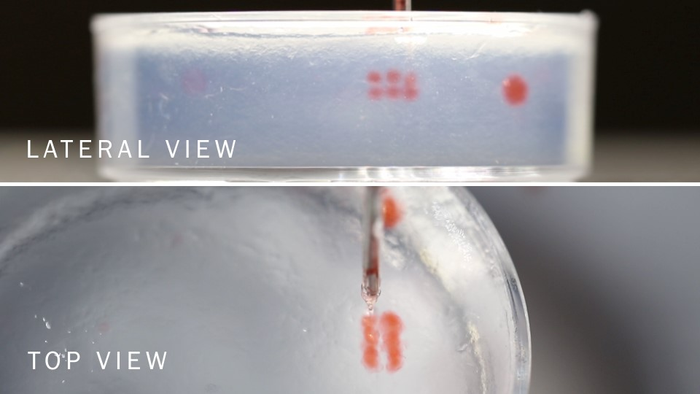At the University of Virginia, researchers developed a new bioprinting technique based on voxels. Voxels are 3D cubes that are basic building blocks in computer graphics, similar to pixels in 2D, and made popular by games like Minecraft. The new technique prints discrete spherical bio-ink blobs (called voxels) within a supporting matrix, which then swell to fuse together to form a porous structure. Bio sticky inks can be difficult to work with and predictably print, but this new technique is helping to address this problem.
Bioprinting is a promising way to 3D print new tissues or even organs. Until then, however, there are many practical and technical hurdles to overcome. Typically, the existing process involves printing a sticky bioink composed of a biomaterial matrix with encapsulated cells suspended therein. This is often achieved by printing the bioink as a filament that emerges from the printer nozzle and then stacking the filaments in layers to form a structure.
One of the problems is that these sticky filaments are not easy to handle and this method can make it difficult to create a desired structure. “It is very difficult to print bio-ink particles because they are very sticky,” said Liheng Cai, a researcher involved in the study, in a press release. “Since the organic inks have the consistency of honey, it is difficult to control when and how they come off a printer nozzle. This becomes even more difficult when the bioink particles are as small as the diameter of a strand of human hair. A second challenge is to manipulate each particle in such a way that it builds a 3D structure. ”
To address this, these researchers used the 3D pixels found in computer games as inspiration for the construction of a bio-printed structure. Their technique, known as the Digital Assembly of Spherical Viscoelastic Bio-Ink Particles (DASP), involves separating a droplet of bio-ink into a slurry of gelatin microparticles. The supporting matrix enables researchers to place the “voxels” in precise locations in order to build up a desired structure.

“You need to make particles that maintain a round shape when they peel off the printer nozzle,” said Jinchang Zhu, another researcher who was involved in the study. “If the particles are too elastic, they will be deformed into a long, thin strand instead of a ball.”
So far, researchers have used the technique to encapsulate pancreatic islets and have shown that the highly porous nature of the resulting printed construct enables the islets to respond quickly to glucose and rapidly release insulin. “We can’t yet define the properties of each particle exactly like Minecraft does for each voxel,” said Cai. “But this technology is the first step towards 3D printing tissue with the complexity and organization required for biomedical engineering, drug screening, and disease modeling.”
Study on advanced functional materials: digital arrangement of spherical viscoelastic bio-ink particles
Via: University of Virginia
